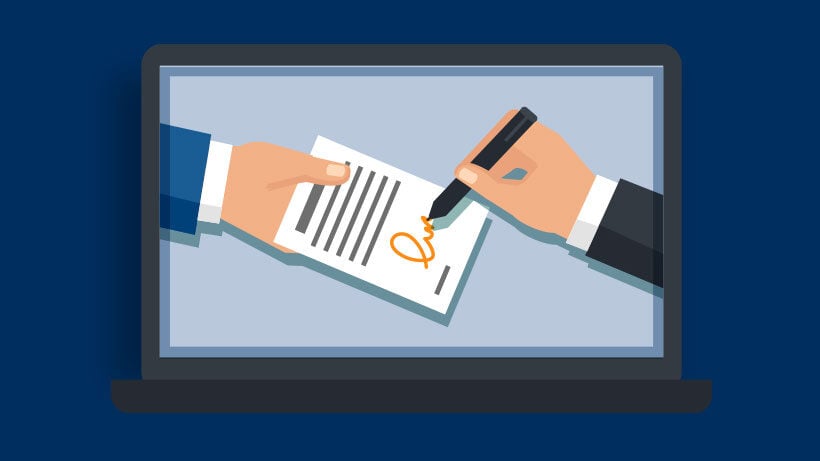What is customer management software? An explanation
Published: February 19, 2025
Last update: August 4, 2025
More and more companies are using customer relationship management software (also known as a CRM system ) to optimize their processes.
As the company grows, the number of customers to be managed and the amount of associated information increases. At the same time, more people are working with this information. Customer management software is used for the structured recording, documentation and provision of this customer information. This can be master data such as addresses, as well as communication data such as e-mails, telephone notes, project logs and quotations.
Table of contents
Defining requirements for customer management software
Most companies initially find it difficult to formulate their CRM requirements. It is therefore important to first take stock of the current processes, weaknesses and strengths in the company in order to derive corresponding potential for improvement and strengths worth preserving. If difficulties arise, you should not be afraid to ask for outside help, e.g. in the form of an analysis by a CRM consultant.
Depending on where the server is located, a distinction is made between:
On-Premise: The software for customer management runs on a dedicated server in your own company
Private Cloud: The customer management software runs on a dedicated server with a hosting service provider
Public Cloud: The customer management software runs on a server at a hosting service provider on which other customers are working at the same time
Hybrid: Hybrid of on-premise and cloud
Types of
customer management software:
Server-based with local installation on the end devices
Web-based: Application runs on a server and is accessed via the browser
Hybrid form: locally installed clients and use via the browser
Most common requirements for customer management software
- Central provision of customer master data for all customer managers
- Management of additional information for sales, marketing and service
- Management of various customer processes (e.g. appointments, tasks, correspondence)
- Recording and provision of projects
- Selection of customer information for marketing purposes
- Qualification of customers and leads
- Creation of correspondence (individual and serial letters, mass mails)
- Sales automation (e.g. planning customer visits)
- Contract management
- Inventory management
- Evaluation of sales activities and purchases
- Access control - who can edit/view which information?
- Connection to other systems such as online stores, merchandise management, accounting
- Processing of customer service inquiries
- Device-independent access to customer data from PC, smartphone tablet
- Offline access to the data
- more requirements for the CRM software>>
Selecting the right customer management software
Once the requirements have been formulated, the search for the right solution begins. It is difficult to find the most suitable solution, especially given the variety of offers. It is crucial that the standard version already covers as many of the requirements as possible. Ideally, the requirements can be covered by the standard solution.
However, if your own processes are very specific, minor adjustments may be useful. In this case, attention should be paid to the extent to which the customer management software offers this option. Find out more about CRM selection with a system here.
Replacing legacy systems, isolated solutions and reducing resistance
The replacement of outdated systems and isolated solutions presents particular challenges. This is often associated with resistance from users who reject change. Proper project planning and organization, comprehensive change management that takes into account established structures and involves all those affected, reduces potential resistance.
Checklist CRM requirements & specifications
What requirements must your CRM system fulfill? Select your desired functions, processes and interfaces. Determine the basis for successfully comparing different providers.


